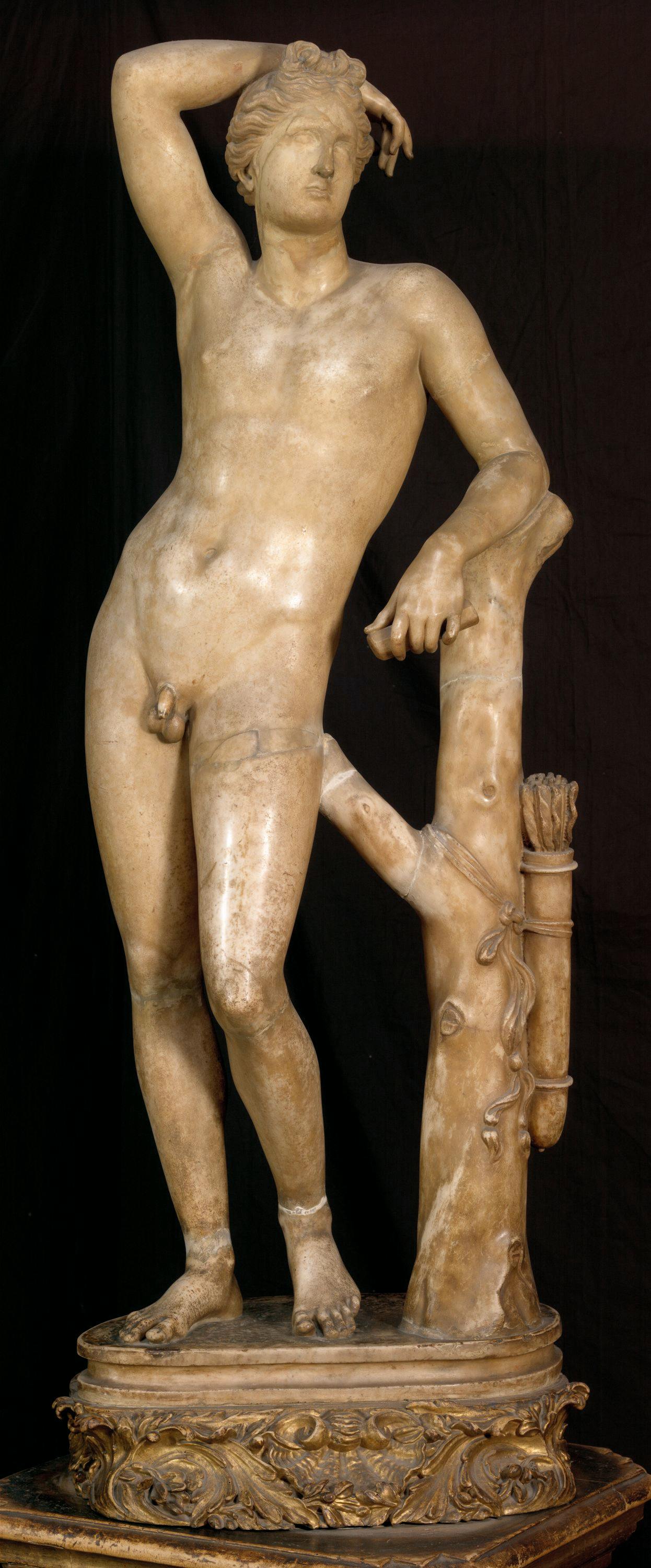Apollino
Roman art
This sculpture was moved to Florence from Villa Medici in Rome, together with the statues of the Medici Niobe Group, in 1770. Since its arrival in Florence, the Apollino has always remained in the Tribuna by Buontalenti, where a singular accident occurred around 1840: a painting fell on it and sculptor Lorenzo Bartolini was charged with restoring it. The right hand is also a modern reintegration, as well as the left arm from below the elbow, part of the base, the nose and the hair.
The graceful, naked male figure of the young god, gently leaning against a trunk and with his right hand on his head, is a Roman copy - dating back to the middle of the 1st century A. D., the so-called Lycian Apollo (Lykeios), attributed to late-classic sculptor Praxiteles of Athens, who worked during the 4th century b. C. The name “Lycian” can be traced back to the root of the Greek word for “light” and to the fact that the newly born Apollo was taken by his mother, Leto, to Lycia (a peninsula to the east of the island of Rhodes, now part of the Turkish province of Adalar), or to the god’s fame as a slayer of wolves (since “Lykos” is the Greek word for “wolf”). As for the statue in question – or better, for the original on which it is based – the name “Lycian” would seem to be due to the fact that it was thought to have been placed in the “Lyceum”, the school founded by Aristotle on the southern slopes of Mount Lycabettus in Athens around 335 b. C., near a sanctuary dedicated to Apollo.
The sinuous pose of the figure has been recognised as a characteristic of Praxiteles’ work: and it is not by chance that it can be seen in another of his works, perhaps the most copied statue in the ancient world, the famous Aphrodite of Knidos, also in the Tribuna, in the famous variation known as the Medici Venus.
3D model realized in collaboration with Indiana University. Visit https://www.digitalsculpture-uffizi.org/
3D model in collaborazione with Indiana University.
Visit http://www.digitalsculpture.org/florence/
A. Romualdi, L’Apollino della Tribuna, in A. Romualdi, Studi e restauri. I marmi antichi della Galleria degli Uffizi, III, Firenze 2010, pp. 131-134.
